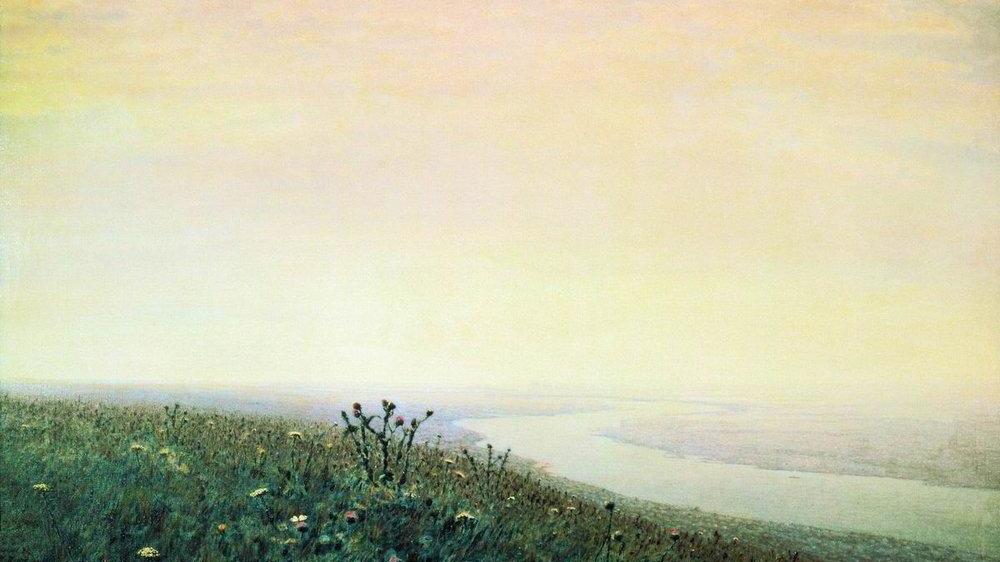Dmitri Shostakovich composed fifteen symphonies and fifteen string quartets. The symphonies deliver drama on a grand, public scale. Many, such as Symphony No. 7, “Leningrad,” and Symphony No. 11, “The Year 1905,” have programmatic associations. They are filled with irony, double meaning, and coded messages. They are the music of a composer who lived continuously under mortal threat of displeasing Stalin and his Soviet cultural censors. At times equally haunting, melancholy, and defiant, the string quartets are more intimate and personal. They contentedly inhabit a more traditional classical form. The Russian conductor and pianist Yevgeny Mravinsky said, “Shostakovich’s symphonies are the diaries of the great Soviet epoch; his chamber music reveals all his truly intimate letters and feelings.”
Shostakovich’s String Quartet No. 1 came about modestly and almost by accident. It was written in Leningrad between May 30 and July 17 of 1938, only months after the premiere of Shostakovich’s monumental Fifth Symphony. With the Fifth Symphony, Shostakovich attempted to return to the good graces of Stalin and the Soviet establishment. The result was music characterized by a forced “heroism” and “celebration” which becomes sardonic. In the wake of the Fifth Symphony, String Quartet No. 1 emerges as pure music. Shostakovich described it as “consisting of four small sections.” Lasting around fifteen minutes, it has the feel of a classical divertimento. Shostakovich wrote,
I began to write it without special ideas and feeling, I thought that nothing would come of it. After all, the quartet is one of the most difficult musical genres. I wrote the first page as a sort of original exercise in the quartet form, not thinking about subsequently completing and releasing it. As a rule, I fairly often write things I don’t publish. They are my type of composer’s studies. But then work on the quartet captivated me and I finished it rather quickly…Don’t expect to find special depth in this, my first quartet opus. In mood it is joyful, merry, lyrical. I would call it “spring-like.”
The First String Quartet is set in C major, the purest and most open of keys. The opening movement (Moderato) begins with a wandering melody tinged with naivety and lament. Soon, there is a brief echo of an anguished, longing passage from the final movement of the Fifth Symphony. Here, the ascending line melts away into contentment or, perhaps, resignation.
The second movement (also marked Moderato) is a set of eight variations on a melody which resembles a Russian folksong. The plaintive melody, set in A minor, is introduced by the solitary voice of the viola. It feels like the hypnotic, improvisational song of a wandering street musician. With a final pizzicato chord, it drifts away into the night.
Moving to the remote key of C-sharp minor, the third movement (Allegro molto) features the veiled sound of muted strings. It is a truncated version of the classical scherzo and trio. In the final bars, the two sections blend together.
Returning to C major, the final movement (Allegro) is fun-loving fiddle music. Its exuberant musical conversation is filled with surprise interjections and rhythmic shifts. In a letter, Shostakovich wrote that during the composition process, the movements were regrouped and “the first movement became the last, the last first.”
The Borodin String Quartet worked closely with Shostakovich and recorded the first thirteen quartets before the final two were written. This Moscow studio recording from 1978 features a later incarnation of the ensemble, featuring Mikhail Kopelman and Andrei Abramenkov (violins), Dmitri Shebalin (viola), and Valentin Berlinsky (cello).
Recordings
- Shostakovich: String Quartet No. 1, Borodin String Quartet Amazon
- Borodin Quartet (first recording of Shostakovich’s Quartets)
- Brodsky Quartet
Featured Image: “Dnieper in the Morning” (1881), Arkhyp Kuindzhi


Outstanding description of the musical life of Shostakovich, the pressures he lived under, and how they affected his music. I spent over a year studying his fascinating and somewhat tragic life and music and can recommend Wilson’s “Shostakovich: A Life” and MacDonald’s outstanding “The New Shostakovich.” A towering musical genius.